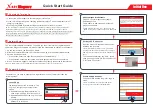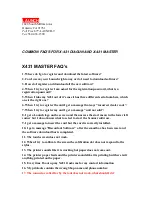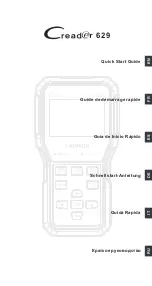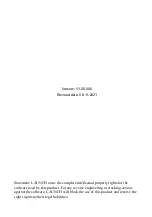
DMS-R-IM
Appendix
April 7, 2021
Digital Modular System - Rinse
9-27
9.12
Resistance Temperature Detector (RTD)
Calibration Procedure
Following is a general guideline to perform RTD calibration.
No.
Description
1
Get ready:
A calibrated handheld digital probe thermometer or similar
instrument such as Fluke 52II Dual Probe Digital Thermometer.
A calibrated immersion temperature probe or similar device
such as Fluke 80PK-22 SureGrip™ Immersion Temperature
Probe
2
Prepare the measurement data sheet.
3
Fill up the tank with DI water. Power on the system but do not heat
up the tank.
Observe proper safety while system remains power on.
4
Connect the calibrated temperature probe to the calibrated handheld
digital probe thermometer. Power on the thermometer.
5
Record the cleaning bath (tank) temperature reading shown on HMI
screen, X
1
.
6
Measure the cleaning bath temperature by the calibrated handheld
digital probe thermometer. Record the measured reading, Y
1
.
7
Heat up the cleaning bath to a value. When stable, record the
cleaning bath temperature reading shown on HMI screen, X
2
.
8
Measure the cleaning bath temperature by the calibrated handheld
digital probe thermometer. Record the measured reading, Y
2
.
9
Two such data points are minimum required. Advisable to perform
step 5 and 6 again for a few more temperature test points.
10
Construct a graph of the calibration measurements by plotting the
“known” value (Y
1
, Y
2
, Y
3
….) on the y-axis and the “experimental”
value (X
1
, X
2
, X
3
….) on the x-axis.
11
Draw a straight line through the data points and determine the
equation of the line.
12
The equation will be of the general form
y = mx + b
, where m is the
slope, x is the measured value and b is the y-intercept.




































